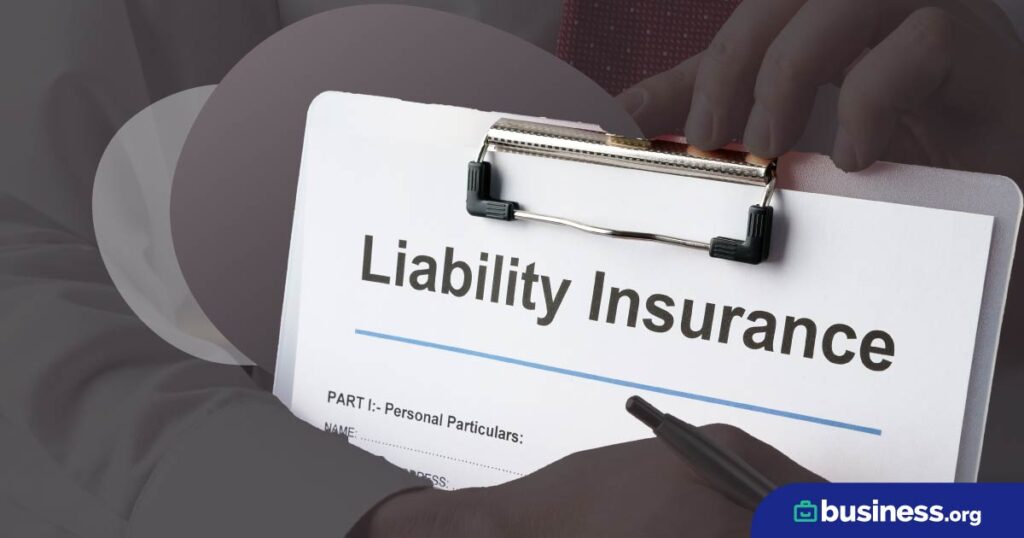We are committed to sharing unbiased reviews. Some of the links on our site are from our partners who compensate us. Read our editorial guidelines and advertising disclosure.
10 Steps to Hiring Your First Employee in a Small Business

The right employee can add immense value to your business. But before you can start turning tasks over to your first new hire, you have to jump through some crucial legal and financial hoops. We’ll walk you through the basics of hiring your first employee, from getting the right business tax ID for your business to withholding payroll taxes.
How to Hire Your First Employee
By signing up I agree to the Terms of Use and Privacy Policy.
1. Get an EIN
An employer identification number—EIN or a business tax ID—is the equivalent of a Social Security number for your business. It’s a unique number that the Internal Revenue Service uses to identify your business for tax purposes.
Ideally, you have an EIN before hiring your first employee. While the IRS doesn’t necessarily require sole proprietorships to have an EIN, it makes separating your business and personal finances much easier. The IRS does require businesses that hire employees to have an EIN. If that’s the stage you’re at in your business, now’s the time to get one.
Luckily, it’s pretty easy to get an EIN. You just have to apply online on the IRS’ website. Filling out the application shouldn’t take more than 15 minutes, and you’ll get your new EIN via email later the same day. You can also submit an application through mail or over fax, but it’ll take two to four weeks to get an EIN.
2. Determine if you need W-2 employees or 1099 contractors
There are two main types of workers your business could hire: a 1099 independent contractor or a W-2 employee—a description that refers to the tax forms they use to file taxes.
A 1099 employee is an independent contractor who is self-employed and contracts with your company to accomplish a specific task. For instance, your business might employ a freelance designer to create a logo or website, or you might contract with a PR advisor to market your company.
Self-employed contractors pay their own taxes, including Medicare and Social Security (FICA) taxes and income taxes. You don’t withhold or remit your contractor’s taxes, you don’t pay taxes on contractors, and you don’t pay for employee benefits, like health insurance, either. Your main obligation is to pay your contractor fairly and on time, then send them a 1099 tax form at the end of the year so they can file taxes correctly.
W-2 employees, or internal employees, work directly for your company instead of for themselves. They can be part time or full time, paid hourly or with a salary. But no matter what, you’re responsible for paying them on a set schedule, withholding the right amount of payroll taxes from their paychecks, paying your part of the taxes, and sending those taxes to the federal government. At the end of the year, you give employees IRS Form W-2, which your employees will use to file taxes.
3. Understand your legal obligations
Employers don’t provide benefits for self-employed contractors, so if you only plan to hire contractors, skip this section. But if you’re planning to work with internal W-2 employees, you’re legally obligated to provide workers’ compensation insurance.
You also need to match your employees’ Social Security and Medicare (a.k.a. FICA) tax contributions. You and your employee will each contribute 7.65% of the employee’s gross wages to FICA taxes.
Depending on where you work, how many employees you have, and what type of business you run, you might have to provide other benefits to comply with state law. For instance, businesses in California, New York, New Jersey, Hawaii, Puerto Rico, and Rhode Island must offer disability pay. Many larger businesses must offer health insurance that complies with federal regulations.
The U.S. Small Business Administration (SBA) offers a guide to hiring employees with more resources that can help business owners understand benefits. A local employment lawyer can help you get a better handle on your federal, state, and local responsibilities too.
4. Post your job listing and conduct interviews
Finally, you can start putting together a job listing to attract top candidates. Obviously, your job posting (and where you post the job) will differ based on your industry and the position’s specific requirements.
No matter what, though, your job posting should include some key pieces of information:
- Job title
- Job description (or a basic explanation of the job’s duties)
- Job requirements (for instance, years of experience or types of degrees)
- Basic information about your business
- Ways this job can benefit employees
- Job location and hours (including full time vs. part time positions)
- Application instructions
- Contact information
Once you’ve received applications, you can start holding interviews and narrowing down your candidate pool. You can prepare for interviews in a few key ways:
- Study your candidates’ resumes so you can ask specific questions about their backgrounds.
- Ask open-ended questions instead of suggesting the answers you want to hear.
- Take notes so you can compare candidates after you’ve finished your interviews.
When writing job listings and holding interviews, make sure you comply with all equal opportunity and anti-discrimination laws. Otherwise, you could face a discrimination lawsuit.
The U.S. Equal Employment Opportunity Commission, or EEOC, oversees equal employment at every level of the hiring process. You’ll avoid a world of trouble by checking out the EEOC’s list of prohibited employment policies and practices.
5. Collect your new hire’s tax information
If you hire an internal employee, you’ll need to calculate tax deductions, withhold that amount from paychecks, and remit those taxes to the correct government agency on a quarterly basis. To withhold the right taxes, you’ll need to gather your employee’s tax information as soon as they start working.
You’ll need to have your employee fill out IRS Form W-4, a.k.a. the Employee’s Withholding Certificate. Collect the completed form ASAP. Your employee is responsible for any mistakes they make when filling out the W-4, but you’re responsible for any tax errors that occur because you didn’t collect the form or use the information correctly.
Don’t try to calculate taxes with nothing more than a pencil and paper. Use a free paycheck calculator instead. Just enter basic information about your employee’s gross pay and tax designations to find the amount of taxes to withhold and the net pay you’ll send your worker home with.
6. Report your new hire within 20 days
According to the (clumsily named) Personal Responsibility and Work Opportunity Reconciliation Act, employers must report new hires to the state agency that regulates wage garnishments for child support payments. The bureau you report to differs from state to state. To figure out what your state requires, check out the Office of Child Support Enforcement’s list of the reporting agencies in each state.
Make sure to thoroughly research your state’s new hire paperwork requirements and reporting agencies. Failing to report new hires correctly and on time can land you with a fine.
Don’t want to deal with new hire reporting on your own? Most payroll software will either automatically report new hires on your behalf or generate a list of your new hires and their tax information to make new hire reporting as simple as possible.
7. Decide on a pay schedule
How frequently you pay your employees depends on a few key considerations, including your company’s typical cash flow and your state’s regulations. First, you need to make sure you’ll have enough money in your bank account to pay out your employees on payday. (A payroll loan can help you cover costs if you unexpectedly run short one week.)
To figure out how much cash flows in and out of your business throughout the week, month, and year, check out your business’ cash flow statement. An accountant can help you figure out a solid cadence for paying employees without straining your cash resources.
You’ll also need to find out if your state has any payday requirements. For example, in California, employees in most industries must be paid twice monthly. But in Rhode Island, almost all employers must pay their workers weekly. Check the U.S. Department of Labor’s table of state payday requirements to make sure you’re compliant with state labor laws.
8. Run payroll
Once you’ve hired an employee, collected their tax information, and decided on a pay schedule, you’re finally ready to run payroll. You can do this a few different ways depending on the payroll method you choose:
- If you’re going to calculate payroll by hand, find a payroll template you like and use it alongside a paycheck calculator to determine your employee’s gross and net pay, then cut a check.
- If you’re using payroll software, enter your employee’s tax and work information, then press “run payroll” (or the equivalent button) to calculate the withholding and paycheck amounts. You can then print paychecks and pay stubs or use direct deposit to pay your employee.
- If you work with an accountant or outsourced accounting company, send them the information they need to calculate payroll amounts, pay your employees, and assist with taxes.
Explore small-business payroll solutions
Interested in payroll software but not sure where to start? Fill in some basic information about your business, including what type of payroll you’re looking for and how many employees you have, to get up to five personalized payroll quotes.
9. Remit payroll taxes to the IRS
The taxes you withhold from your employees’ paychecks don’t just sit around in a bank account until the end of the year. Most small businesses are required to remit employment taxes on a quarterly basis. The IRS lists all employment tax deadlines online, which is also where you can electronically submit both your taxes and the necessary paperwork.
Along with submitting your employees’ state and federal income taxes, you need to remit both the employer and employee portions of FICA taxes (Social Security and Medicare).
Employers also pay FUTA taxes, a federal unemployment tax paid only by employers, not employees.
10. Distribute end-of-year tax paperwork
If you have W-2 employees, you must send IRS Form W-2 to each employee so they can file their own taxes. If you have 1099 contractors, you’ll send out IRS Form 1099-NEC instead.
Typically, payroll software can generate pre-filled tax forms for you or make them accessible to each employee via an online portal. You also need to send copies of your employees’ W-2s or 1099s to the IRS along with your quarterly tax payment. If you aren’t using payroll software (and, frankly, even if you are), meeting with an accountant can help make sure you’re distributing the right tax forms to employees.
The IRS website explains which tax forms you need to submit and by which date in more detail.
The takeaway
Finding the right employee for your business can be a challenge but getting the ideal candidate is absolutely worth the effort. And remember that you don’t have to deal with every step of the hiring process by yourself. The right payroll software can tackle some of the trickiest parts of payroll for you, giving you more time to focus on recruiting the best first hire for your new role.
Related reading
Hiring your first employee FAQ
No, you don’t need a payroll service to hire your first employee. However, using a payroll service—even to run payroll for just one employee—can dramatically simplify your work life.
For instance, some payroll software automatically reports every new hire to the state and can sync with time-tracking software to calculate paychecks, reducing your risk of errors. A full-service payroll solution can also calculate and withhold payroll taxes, remit those taxes to the right agency, and pay employees automatically via direct deposit.
Running payroll for one employee can cost anything from $0 to $40. With the exception of free payroll software like Payroll4Free, most payroll software services charge you a monthly base fee plus an additional fee per employee. (Some payroll services, like Square Payroll and Gusto, waive their base fee for employers who only need to pay 1099 contractors.)
Disclaimer
At Business.org, our research is meant to offer general product and service recommendations. We don't guarantee that our suggestions will work best for each individual or business, so consider your unique needs when choosing products and services.




